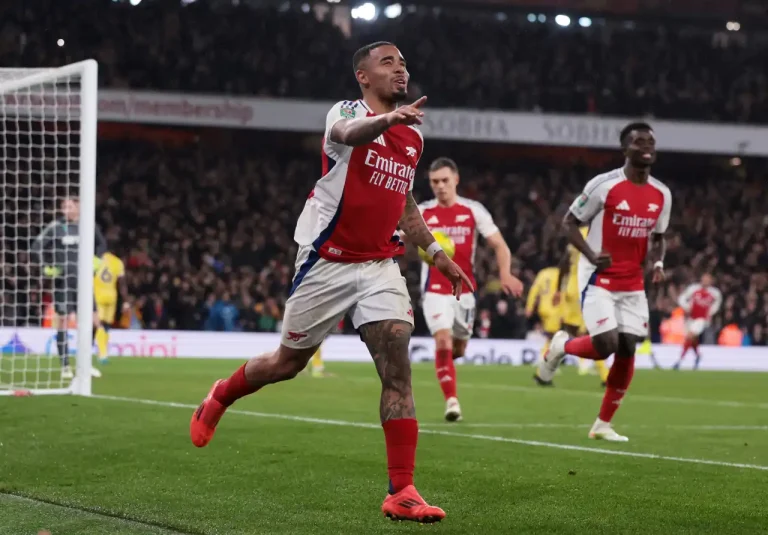As a mediocre team for many years, it is natural that there are not many memories attached to Aston Villa. Most Gen Z football fans may not know that Kyle Walker was loaned to Aston Villa, Robert Pires spent eight months there, and Garry Cahill started his career at Aston Villa U-18.
Luckily, as technology develops, football fans are more easily exposed to information, including information from mid-table clubs such as Aston Villa. As a further impact, our memory of this club from Birmingham is getting richer. We all remember that in the 2020/2021 season Liverpool suffered a crushing 7-2 defeat at Villa Park. We also remember the emergence of several potential players who have proven capable of competing in the Premier League, such as Jack Grealish, Emiliano Martinez, and the hottest one, Ollie Watkins.
However, in 28 seasons of competing at the highest level of the Premier League, they have not won a single title. His best achievement was finishing in second place in the first season of the Premier League era (1992/1993). In the last two decades, Aston Villa have only felt perched in the top 10 of the final standings five times. Of the rest, they more often occupy the bottom board and occasionally the middle board.
Aston Villa’s worst performance was when they finished at the bottom of the standings in the 2015/2016 season. Of 38 matches, the team nicknamed The Villans only won three matches. It is not surprising that by the end of the season, they were only able to collect 17 points (17 points different from the bottom two). Aston Villa that season was very unstable. Changing four coaches in one season is inevitable and only makes matters worse. The 2015/2016 season was the beginning of Aston Villa’s dark period until they had to struggle in the Championship Division.
What caused it?
Relegation is the source of various problems that have arisen in the Aston Villa camp. Starting from a small scale that continues to roll and grow like a snowball. The emergence of problems stems from internal clubs struggling between the owner’s decisions, the rapid turnover of team composition, and the selection of coaches who are not on target. Financial policies also worsen the situation without any effective and efficient solutions.
Randy Lerner took over ownership of Aston Villa in mid-August 2006. The man who (at that time) was still 44 years old was on a mission to bring Aston Villa to sustainable success. He also emphasized that achieving this goal would take a long time.
“We plan to build a club that achieves sustainable and long-term success. Our plans will not come true overnight. However, these plans will be carefully considered and thought out, then communicated clearly to our supporters. “Even though it’s still early in the season, I want to give praise to Martin O’Neill and his squad for the start they have made to this new season,” said Randy Lerner as quoted by The Guardian (20/09/2006).
Lerner’s Misguided Policies
The acquisition of Randy Lerner had an instant impact on the team’s performance (at least improving its standings). The previous season Aston Villa only sat in 16th place. Seeing this situation, before his first competitive season started (2006/2007) he spent around 22 million pounds to bring in new players, namely Ashley Young (Watford), Stylian Petrov (Celtic), Shaun Maloney (Celtic) and several loan players. At the end of the season, Aston Villa finished in 11th place (five places better than the previous season).
Seeing this increase, Lerner became increasingly “brave” in spending funds to recruit more players who were considered to be of higher quality. His love for Aston Villa is growing and he is increasingly ambitious to take Villa to the highest level. Martin O’Neil as coach spent almost 50 million pounds to welcome the 2008/2009 season. One of his recruits is a midfielder who is currently defending Brighton and Hove Albion, namely James Milner. Lerner’s optimism is increasingly high because the funds he disbursed are accompanied by an increasingly better standings position. In the 2007/2008 and 2008/2009 seasons, Aston Villa managed to penetrate the top six and compete in Europe.
However, Lerner’s courage in issuing transfer funds had an unhealthy financial impact. The financial report (May 2009) reported by Bleacher Report explains the club’s record loss of 46.2 million pounds. In fact, the previous year the loss figure was only 7.3 million pounds (an increase of 38.9 million pounds). Operating costs jumped 50% from £70.8 million to £105.1 million. The main cause is the cost of staff wages from 86 staff to 134 staff. Unfortunately the club did not provide an explanation of the urgency of the significant addition to staff. An investigation from The Times further exposed Aston Villa’s financial problems by revealing that the club’s salary to income ratio (76.8%) was above UEFA’s recommended limit of 70%.
This shows that there is an error in financial policy making. Of course, the fundamental cause of Aston Villa’s ballooning spending is player spending. The situation is made worse because the players brought in are not sustainable so the majority only pay salaries. A report from Bleacher Report in 2009 stated that Lerner’s first three seasons in office (2006-2009) he had invested £ 125 million in new players. If we look further, Lerner’s total investment reaches 270 million pounds, consisting of 62.6 million pounds for acquisitions, 108 million pounds in the form of equity and 97 million pounds in the form of loans. The 2009 financial report actually shows an increase in capital of up to 25 million pounds. However, unlike many other owners, the financing was not used to improve the ground, either through expansion or building a new stadium, but rather to provide funds for the manager to contract a new squad at much higher salaries.
Lerner’s misdirection of financial policy had far-reaching consequences, resulting in debt. Aston Villa’s reported net debt in 2009 had increased by 18% from £72.3 million to £85.2 million. Net debt as at 31 May 2009 consisted of £84.5 million of debentures and £9.2 million of bank loans and overdrafts less £8.5 million of cash. According to a review by The Times, only four clubs have more debt than Villa, namely Manchester United, Liverpool and Arsenal, and Portsmouth.
Games without Clear Organization and Structure
The problems experienced by Aston Villa not only arise off the pitch, but also on the pitch. When Randy Lerner took over ownership of Aston Villa, Martin O’Neil was responsible as head coach. The combination of Lerner and O’Neil in the first three to five seasons showed positive results with three finishes in the European zone.
However, these times did not last long. After ending in sixth place in the 2009/2010 season, Aston Villa experienced a drastic decline. This is characterized by a decline in productivity and is exacerbated by a defense line that easily concedes goals. It was recorded that from the 2010/2011 season to 2015/2016 (relegated season), Aston Villa’s goal difference was always negative. As a result, Aston Villa was once again transformed into a bottom team.
One of the reasons was the departure of Martin O’Neil in August 2010. O’Neil, who had led Aston Villa in 190 matches and three consecutive seasons, brought the Villa Park public a taste of European competition, leaving at the same time as the departure of their mainstay player, James Milner, to Manchester City. Lerner failed to find a coach who could succeed O’Neil. There were five recorded coaches who managed Aston Villa before being relegated. Only Paul Lambert was able to last long enough in office, namely from June 2012 to February 2015. The rest never lasted more than 50 matches.
Gerrard Houllier – France – 40 Games
Alex McLeish – Scotland – 42 Games
Paul Lambert – Scotland – 115 Games
Tim Sherwood – England – 28 Games
Remi Garde – France – 23 Games
The 2015/2016 season was Aston Villa’s lowest point in terms of play on the field. Starting from individual to collective aspects. From an individual perspective, Brad Guzan’s performance between the sticks received the sharpest attention. He recorded a save percentage below the average for other goalkeepers. Unique statistics show that every time Aston Villa takes the lead, Guzan’s performance becomes worse with a save percentage below 40 percent. When they have a vulnerable goalkeeper, Villa’s defense is unable to act as a solid “filter” for attacks. The defense structure is very easily disorganized, causing many gaps to emerge. So it is not surprising that this season Aston Villa conceded 76 goals.
In terms of attack, Aston Villa was one of the worst in the 2015/2016 season. They are the third worst team in shooting on target (shots on target). Not only that, they also have great difficulty getting into the opponent’s penalty box as evidenced by the percentage of shots from outside the penalty box which reaches 48.1%. Aston Villa’s low productivity was influenced by Christian Benteke’s departure to Liverpool. Practically they can only rely on Jordan Ayew and Gabriel Agbonlahor. As a result, until the end of the season, Aston Villa only scored 27 goals.
ASL
















